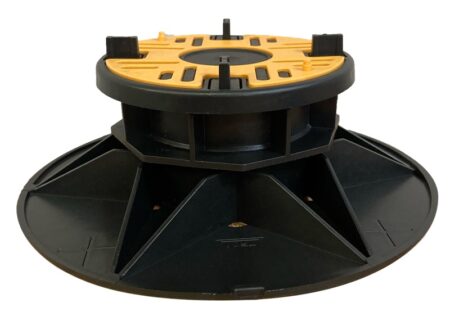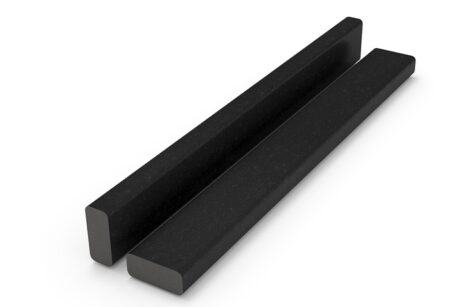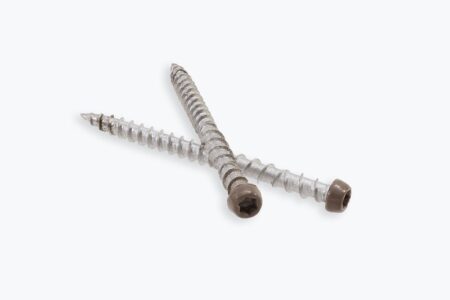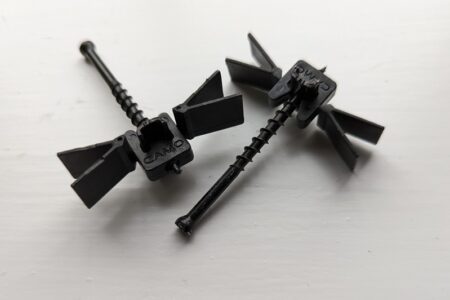Wondering which type of subframe is right for a new decking area? You’re in the right place. There’s lots to consider when choosing a structural support system for a deck, from materials and appearance to installation ease and longevity.
As composite decking specialists, it’s little wonder we prefer composite subframes to timber or plastic. Here, we talk you through the reasons why composite is the clear winner in our eyes, whether you’re creating a deck for your home garden or installing a large decked area in a busy event space.
What is a decking subframe?
A decking subframe is the base of your deck, the structure that supports your boards and bears the weight of people and objects on the decking. It works to prevent structural issues with the deck, from wobbling and sagging to issues like water pooling. Choosing the right subframe is key to a long-lasting, high-performing decked area that you or your client can enjoy for years to come.
How is a subframe for decking structured?
The performance of a decked area is dependent on the quality of these sub-structures beneath it. Subframes are made up of the following components arranged in a grid-like pattern:
- Posts or pedestals
- Beams or joists
- Screws
Posts and pedestals
Posts are positioned vertically to fix the subframe to the ground or other surface acting as the base.

Pedestals (or ‘risers’) are another option for attaching the subframe to the ground or surface. They are particularly effective on concrete, podiums, and balconies, as well as decked areas on slopes.

For more information on these components and to understand which is best suited for your subframe, browse our pedestals and posts.
Beams and joists
Beams and joists lie horizontally across the posts or pedestals to support the weight of the deck boards above. Different types are suited to different decking applications and positions. Low profile beams and joists are better for installations with a low distance from the ground, whereas beams and joists with a deeper profile are preferable for raised deck areas.

Screws
To fasten the subframe’s components together, you need screws or clips. Screws are well-suited for both timber and composite subframes. To minimise the appearance of the screw in the frame or on the deck boards themselves, we offer colour-matched screw heads for a complementary finish.


Please take a look at our complete guide to composite decking screws and clips for all the information you need to decide which fixing is best for your project.
We also recommend reading our article on things to consider when building a base for composite decking for a full structural breakdown of a subframe.
Types of subframe for decking
There are numerous types of decking subframe to choose from. Below, we compare two of the most popular subframe materials: traditional timber and more contemporary composite. (Make sure you also take a look at our article comparing composite decking with timber for full details of the differences between the two materials!)
Timber subframe
For those looking for a quintessential wooden decked area, a timber subframe seems like the obvious choice. The components enhance the earthy look of wooden deck boards, but at a cost. Timber is a high-maintenance material, so the subframe will need regular care and attention to reduce the risk of structural issues.
If you’re after a timber subframe, it’s important to understand the level of maintenance required to keep the material in good working condition:
- Timber is prone to moisture build-up, so you need to ensure good airflow around the outside and underneath the subframe.
- It’s also vulnerable to rot, so pressure treatment is required to keep the subframe clean. We recommend using treated timber.
- Over time, timber decays, so continuous treatment is required to prevent this from occurring.
Composite decking subframe
If you’re after the natural appearance of timber but without the maintenance demands, then a composite subframe is the ideal solution. Made from a combination of wood fibres and recycled plastic, a composite base has the traditional look of timber as well as the structural properties which enhance performance and longevity.
Composite subframes are:
- Highly resistant to rot, warping, and moisture, which can lead to structural issues.
- Low maintenance
- Visually appealing and available in numerous colourways to complement your chosen decked boards.
Sustainable composite subframes
Like our composite deck boards, all composite subframes from Ecodek are manufactured from sustainability-sourced wood and recycled plastic here in Britain. So not only can you feel confident in the strength and performance of your composite subframe, but in the reduced carbon footprint associated with its manufacturing and transport, too.
Choosing the right deck subframe
As you’ll now understand, there’s more than meets the eye when it comes to choosing the right subframe for a home decked area or commercial application.
Our team of decking specialists are on hand to share advice and information to make sure you opt for the materials to maximise the quality, appearance, and lifespan of your decking. Please get in touch or browse our resources to find further insights and support about all-things composite decking and installation.
